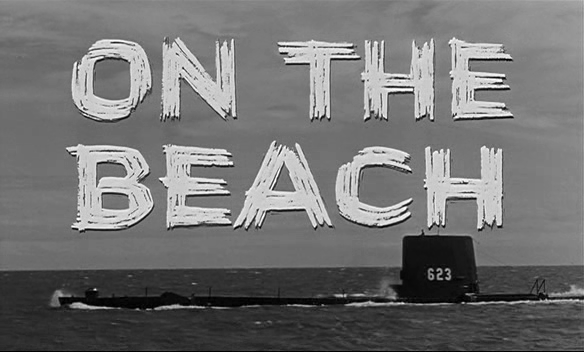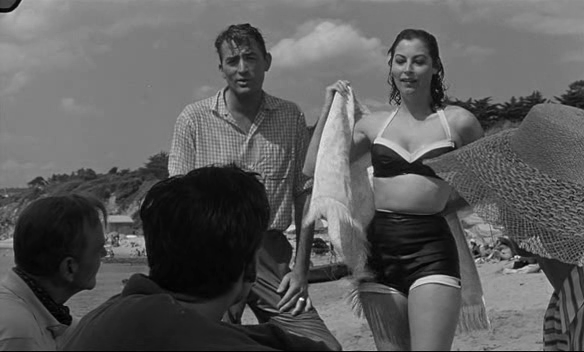Rosemary Benton, as you know, is one of our regular columnists. Imagine my surprise when she suggested the following subject for her article this month. I'm just glad I didn't have to propose it to her…


Nude on the Moon is a surprising piece of science fiction cinema directed by Raymond Phelan and Doris Wishman under the pseudonym Anthony Brooks. Like so many adult oriented films this one was a passion project. Phelan and Wishman co-directed, produced and wrote the script and made excellent use of their surrounding area – southern Florida. Residents of Homestead, Florida will immediately recognize the set of the moon colony as the famous Coral Castle. Although the production budget is obviously small, Phelan and Wishman managed to make a rather intriguing movie.
[WARNING: Those planning to watch Nude might wish to skip the following paragraph!]

The film follows the exploits of two rocket scientists, Professor Nichols (William Mayer) and Dr. Jeff Huntley (Lester Brown), who fund and execute a scientific mission to the moon. The premise beyond that is pretty predictable. They make it to the moon, but to their disbelief it's not the volcanic wasteland that they and the rest of the world expected. Instead they find a peaceful kingdom of nudists ruled by a benevolent black haired beauty who is played by an actress simply credited as “Marietta”. Before they run out of oxygen Professor Nichols and Dr. Huntley must gather evidence of their discovery in order to fund further trips. Tragically, Dr. Huntley and the Moon Queen fall in love but are forced to part so that the two men can return to Earth. In a somewhat romantic turn Dr. Huntley finally notices the duo's long time secretary, Cathy (also played by “Marietta”), when he realizes that she bears a striking resemblance to the Moon Queen. The film ends with them gazing into each other's eyes as they dissolve into the same moon landscape painting used for the beginning of the film.
The effort that is made to sound scientific, combined with the fantastical image of the moon, results in a rather simple but charming movie. The first half of the film is dedicated to Dr. Huntley and Professor Nichols planning how they will use Dr. Huntley's inheritance of 3 million dollars to fund the expedition, extended shots of them tinkering in their labs, the two of them discussing the issues of metal contraction and expansion, and pondering how their trip will go. We see Dr. Huntley and Professor Nichols develop as characters, and even get a surprise reference to Doris Wishman's 1960 nudist colony film Hideout in the Sun. The science part of this piece of fiction melts away pretty quickly once they leave the Earth's atmosphere. After their ship separates and they land we enter the Buck Rogers realm of hockey space suits, gold nuggets just lying around on the ground, and of course a moon's surface that looks strangely like a popular roadside attraction.

It's surprising how fleshed out the two main characters of Nude on the Moon really are. Dr. Huntley is portrayed as a man obsessed with his career and intellectual pursuits, but is naive and almost blindingly optimistic. He's consistently shortsighted too, which is showcased in how quickly he falls in love with the Moon Queen. Not to mention his logic of rejecting government funding in favor of using his own money because, "Money is only good when you're doing something good with it." Professor Nichols is the guiding influence in Dr. Huntley's world. He's the realist and far more money conscious than his partner. Scientific pursuit is extremely important, but not to the exclusion of ladies and film as we see when he flirts with Cathy and expresses his appreciation for Hideout in the Sun.
For a film that's basically an excuse to show topless women there's a lot of setup. The plot even circles around to explain why this mission to the moon isn't known all over the world. By not telling the press, not accepting funding from the US government, and forgetting their camera and samples on the moon they have no proof that their mission even happened. They themselves aren't even sure that they went to the moon since they were passed out during the landing, and even by their own admission what happened to them went far beyond any current conception of the moon's surface.

Given that I could only find this film playing at a grindhouse theater two towns over, plus the clarity of the title, that Nude on the Moon bears the Motion Picture Association of America's (MPAA) label of "Suggested for Mature Audiences" is unsurprising. Roughly half of the running time for Nude on the Moon is dedicated to the tropical paradise nudist kingdom on the moon. Topless perky ladies (and two gentlemen) all lounging, dancing, frolicking before the scientific gaze of the visiting Earth research team. It's purely voyeuristic eye candy, but is still arguably part of a major shift in cinema. Last year the Hays Code (also known as the Production Code) was significantly overhauled to better suite current trends in America's disposition with cinema. Prohibitions on portrayals of drug use, abortion, miscegenation, prostitution, abortion and nudity were all reframed. At the same time blasphemy and ridiculing of the clergy were expressly prohibited. Nude on the Moon still has run into trouble with the censors. New York state banned the film because of its portrayal of nudity outside of an “official” nudist colony context. Phelan and Wishman's explanation that it was a moon nudist colony did not sway their decision.

Nude on the Moon is, and it feels weird to say this, but a rather cute, charming movie. It also can't be overstated how refreshing it was to see a woman director taking to the science fiction genre in film. I am probably not the audience that Doris Wishman or Raymond Phelan expected, but I have to commend them on producing a decently made and written schlock film. It's not often I wander into a grindhouse theater in the pursuit of science fiction, and since The Beast of Yucca Flats was the last grindhouse production I saw I wasn't sure what to expect. It certainly wasn't something of quality. The miniatures used to show the rocket's launch, travel through space, and the landing on the moon were decently done, and the music plays well with the hokeyness of the premise. The plot nicely ties itself up at the end, and most importantly it didn't seem to bore the audience. They are not just at a nudist camp sunbathing, lounging and having a generally relaxing day, they are aliens too! It succeeds very well at what it sets out to do, which is to be a rather adorable twist on the nudist camp genre of films.













